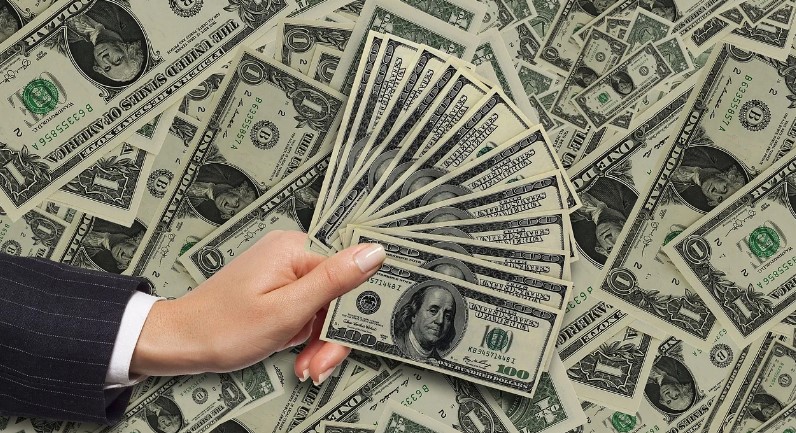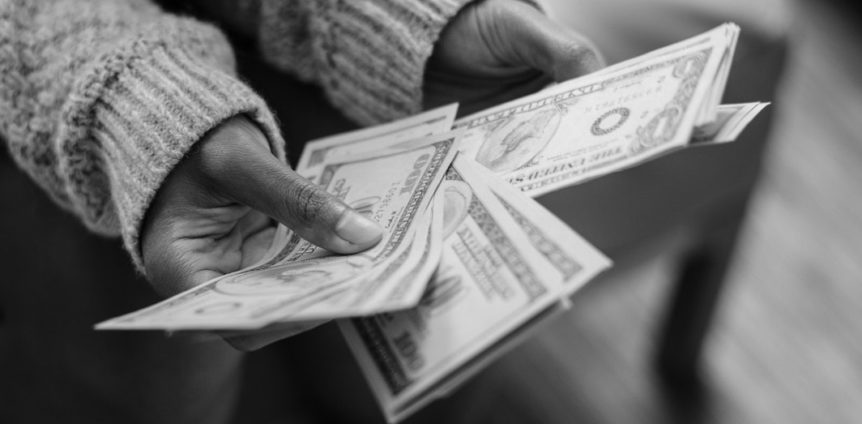A few weeks ago, President Trump signed the $900 billion stimulus funding legislation into law. This effectively circumvented a looming government shutdown after demanding critical changes to the sprawling package.
The money was channeled towards providing enhanced federal unemployment benefits, extending financial aid to struggling households in the form of stimulus checks, and providing funding for childcare, schools, small businesses, and vaccine distribution. It also repurposed $429 billion left over from the CARES Act and channeled it towards emergency lending programs that the Federal Reserve runs.
When the pandemic first hit in March 2020, Trump signed the $2 trillion economic rescue package – the biggest stimulus package in history at the time – into law. The COVID relief bill, better known as the CARES Act, was also meant to keep individuals and businesses across the country afloat, given the unprecedented freeze brought on by the coronavirus.
The question on most people’s minds is – Where does stimulus money come from? Here’s everything you need to know.
What Is Federal Stimulus Money?
A stimulus check refers to money sent out to a US taxpayer by the government. It is meant to stimulate the economy by giving consumers some money to spend. Spending this money boosts consumption and ramps up retail and manufacturer revenues, which in turn spur the economy.
Who gets stimulus money? All taxpayers – whether working, unemployed, unable to work, or retired – are eligible for stimulus checks. Individuals collecting Social Security benefits for disability, retirement, or Supplemental Security Income (SSI) qualify as well.
Small and medium-sized businesses also have access to these funds to keep their doors open and subsidize their payrolls.

How Much Is the Stimulus Check?
Taxpayers received the first stimulus check after Congress enacted the coronavirus relief funding legislation on March 27, 2020. Single adults who reported an adjusted gross income (AGI) of less than $75,000 qualified for a one-time check amounting to $1,200. Married couples who filed jointly qualified for a $2,400 check. Families also got an extra $500 for every child under the age of 17.
On December 27, 2020, the President signed yet another coronavirus stimulus relief bill into law. The eligibility criteria for the second stimulus check remained largely the same, only that this time, individuals with an AGI of up to $87,000, couples filing jointly with an AGI of up to $174,000, and individuals filing as head of household with an AGI of up to $124,500, would also receive a check.
Those with an AGI of up to $75,000 would receive a $600 check, couples filing jointly with an AGI of $150,000 would receive a $1,200 check, and an individual filing as a head of household with an AGI of up to $112,500 would receive a $600 check.
Those with incomes above these amounts but below the maximum AGI limits would receive $50 less for every $1,000 above the $75,000, $150,000, and $112,500 thresholds, respectively.
Where Does Stimulus Money Come From?
As the government continues to spend trillions of dollars in response to the reeling effects the coronavirus pandemic has had on the US economy and American households across the country, where exactly is this money coming from? Here’s an overview of the various funding sources the government is using.
Savings
Before COVID-19 hit, interest rates on US Treasury debt, as well as that of many foreign governments, were quite low. The reason for this was that the world had, and still appears to have, a lot of money saved up. This leaves ample room for the government to borrow money at relatively low costs.
Portfolio Shifts in US National Debt
Private and public institutions with savings, foreign governments, as well as individuals with cash saved up are particularly eager to invest their money in US Treasury debt. In times of crisis, like what is being witnessed with the pandemic, these entities often prefer the safety net that comes with Treasuries, as opposed to putting their money in volatile investments like real estate, the stock market, or corporate bonds (IOUs).
Billions of dollars that were previously invested in money market mutual funds that typically invest in short-term corporate bonds have shifted to money market funds that exclusively invest in US Treasury debt. This allows the Treasury to borrow huge amounts of money without having to pay high-interest rates.
The Central Bank
The Federal Reserve can create or “print” virtual money, and it can use that money to buy US Treasury bonds. That’s exactly what it is doing right now, and it wouldn’t be the first time either. It did this in the Great Recession of 2007-2009. A few strokes on a computer and the Fed can create new dollars out of thin air.
It then injects this “money” into the commercial banking system, adding it to the reserves of banks like Morgan Stanley, Goldman Sachs, and Wells Fargo, and the US Treasury as well.
To be clear, the Fed isn’t actually giving the Treasury money directly. In effect, it is buying government bonds – which are essentially IOUs – alongside private investors and/or foreign governments that have lent money to the Treasury as well.
This is great for two reasons. First, the more government bonds that the Treasury buys, the lower the interest rates the government has to pay on additional borrowing. Second, it allows the US Treasury to keep borrowing without driving up the interest rates. However, there’s a limit to how much it can borrow.

Why Can’t the Government Just Print More Money?
There’s only so much money the government can borrow without crowding out private investment and increasing interest rates. On the other hand, based on historic standards, the rates are likely to remain quite low, so for now, the Fed can continue “printing” money and using it to buy Treasury bonds, and the government can spend as much of it as it wants in stimulus packages to protect the economy.
Keep in mind, however, that there’s a direct correlation between printing money and inflation. If the central bank prints too much money, it results in inflation. This is a situation where there are too many dollars floating about the economy chasing too few goods.
The same correlation exists between GDP and inflation. GDP is short for Gross Domestic Product and is the value of the commodities produced within a country over a specific period.
While stimulus money is great for boosting the country’s GDP, which, for the most part, is good for economic growth, a rapid rise has the opposite effect since it puts upward pressure on the prices of goods, services, and wages. This, in turn, leads to a higher rate of inflation.
With Great Power Comes Even Greater Responsibility
For now, since the interest rates are still quite low and inflation remains on the back burner, it leaves a lot more room for the Fed to keep printing money and for the government to keep borrowing. That money can be used to keep the economy moving and make it larger than it otherwise would have been.
Have a question? Live Chat with one of our legal experts today.
